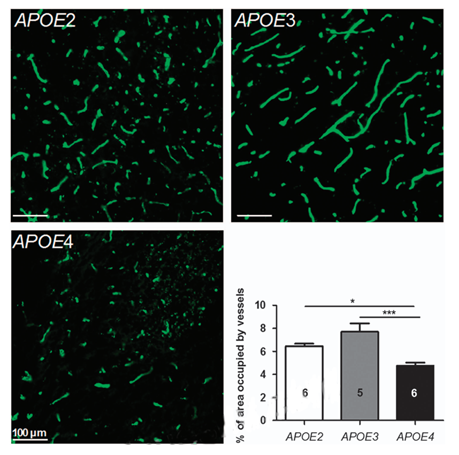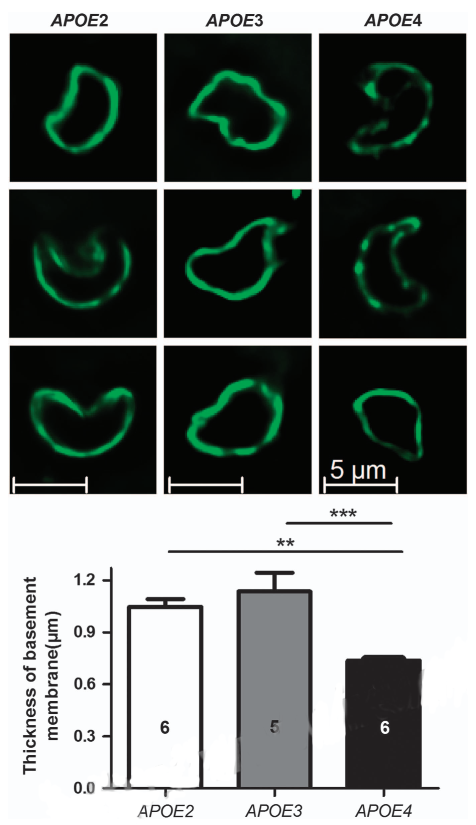ApoE Transgenic Models
APOE plays an essential role in the pathogenesis of Alzheimer's disease (AD). Human apolipoprotein E (APOE) exists in three isoforms ɛ2, ɛ3, and ɛ4, of which ApoE4 is the greatest genetic risk factor so far for AD because of the higher prevalence and earlier onset of AD in apoE4 carriers. The effect of ApoE in AD is complicated as it is involved in both increasing aggregation and decreasing clearance of amyloid β (Aβ). Creative Bioarray specializes in providing customized pharmacodynamic research services to help customers assess the efficacy of drug candidates and investigate the pathological mechanisms of AD through ApoE transgenic models.
ApoE transgenic models include but not limitted to:
- Humanized ApoE2 mouse
- Humanized ApoE3 mouse
- Humanized ApoE4 mouse
- SD- ApoEtm1sage
- SD- hApoE4KItm1sage
Our Capabilities
- We offer APP transgenic models to screen drugs for treatment of Alzheimer’ s disease.
- We provide comprehensive behavioral and cognitive testing on AD model and the drug screening.
- We utilize LTP (long-term potentiation) assay to evaluate your preclinical drug candidates against the synaptic impairments in animals.
- We evaluate anti-oxidative stress in the brain of animals treated with drug candidates.
- We evaluate various biomarkers through WB, IHC, ELISA, sequencing, etc.
Assays available
- Learning and memory deficits tests
- Synaptic impairment
- Oxidative stress
- Neuroinflammation
- Phosphorylated tau
- Glycogen synthase kinase-3 beta (GSK3β)
- Neurofilament Light Chain levels
- Neuronal loss
- β-AP level
- Plaque load
- β-sheet load
- pE(3)-Aβ load
- Enzyme activity related to cholinergic system
- NMDA receptor function and excitotoxicity
- Mitochondrial dysfunction
- Brain slice staining and synaptic electrophysiology
- Blood brain barrier homeostasis
- Cerebral vascular angiopathy (CAA)
With extensive experience in the field of AD, we are confident to help you to overcome any upcoming challenges. Our experts are fully capable of customizing our protocols and assays to meet your specific needs. With our help, we wish to facilitate your research with high efficiency.
Study examples
 Figure. 1. Relative vessel density in the hippocampus was reduced in APOE4 mice. Area occupied by vessels was determined by immunohistofluorescence using anti-collagen IV antibody in 12-month-old APOE2, APOE3, and APOE4 mice. Image analyses were performed in the CA2-CA3 region of hippocampal slices located between bregma - 1.46 and bregma - 1.70. Data are shown as mean ± standard error of the mean (s.e.m.). Statistical analyses: one-way analysis of variance (ANOVA) followed by Dunnett’s multiple comparison test. *P<0.05; ***P<0.001 (n = 5 to 6).
Figure. 1. Relative vessel density in the hippocampus was reduced in APOE4 mice. Area occupied by vessels was determined by immunohistofluorescence using anti-collagen IV antibody in 12-month-old APOE2, APOE3, and APOE4 mice. Image analyses were performed in the CA2-CA3 region of hippocampal slices located between bregma - 1.46 and bregma - 1.70. Data are shown as mean ± standard error of the mean (s.e.m.). Statistical analyses: one-way analysis of variance (ANOVA) followed by Dunnett’s multiple comparison test. *P<0.05; ***P<0.001 (n = 5 to 6).
 Figure. 2. The apparent thickness of the basement membrane of brain capillaries (μm) was reduced in APOE4 mice, as assessed using immunohistofluorescence with an anti-collagen IV antibody in 12-month-old APOE2, APOE3, and APOE4 mice. Data are shown as mean thickness ± standard error of the mean (s.e.m.). Statistical analyses: one-way analysis of variance (ANOVA) followed by Dunnett’s multiple comparison test. **P<0.01; ***P<0.001 (n = 5 to 6).
Figure. 2. The apparent thickness of the basement membrane of brain capillaries (μm) was reduced in APOE4 mice, as assessed using immunohistofluorescence with an anti-collagen IV antibody in 12-month-old APOE2, APOE3, and APOE4 mice. Data are shown as mean thickness ± standard error of the mean (s.e.m.). Statistical analyses: one-way analysis of variance (ANOVA) followed by Dunnett’s multiple comparison test. **P<0.01; ***P<0.001 (n = 5 to 6).
Quotation and ordering
If you have any special needs or questions regarding our services, please feel free to contact us. We look forward to cooperating with you in the future.
Reference
- Alata W et al. Human apolipoprotein E ε4 expression impairs cerebral vascularization and blood–brain barrier function in mice[J]. Journal of Cerebral Blood Flow & Metabolism, 2015, 35(1):86-94.